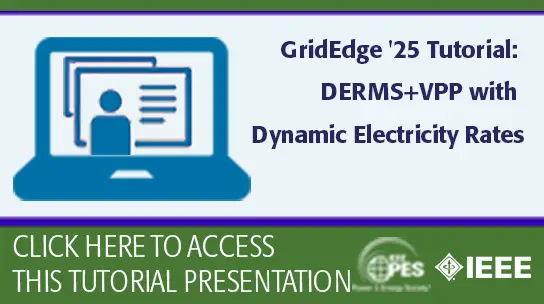Downed Power Lines: Why They Can''t Always Be Dected (PES-DPL3)
F. Arehart, C.W. Barnett, H.J. Calhoun, R. Cornelison, A.N. Darlington, R.T. Dunn, A. Elmore, W.E. Feero, F.O. Griffin, M. Gulachenski, I.O. Hasenwinkle, K.H. Hoffman, Jeerings, R.H. Jones, E.W. Kalkstein, L. Kaschalk, J. Kischefsky, L.E. Landoll, R. Linders, R.J. Moran, C.J. Mozina, R. Nail, J.M. Parker, R.D. Pettigrew, Ross, W.M. Strang, J.T. Tengdin, R. Volzka, W.P. Waudby. P.B. Winston
-
Members: FreePES
IEEE Members: $45.00
Non-members: $70.00Pages/Slides: 41;PES-DPL3;
22 Feb 1989
Public safety and continuity of service have been the hallmark of utility operations since the beginning of widespread electric energy distribution. The degree of human comfort and relief
from physical burden provided by commercial electric power has increased markedly throughout the years.
Some risk of public contact with energized conductors will continue as long as electric power delivery exists. Human contact with downed conductors can be lethal. Once contact is made, no
technique known can prevent injury or death. Overhead conductors can be broken or have their support poles knocked down by acts of nature or accidents, bringing the conductors to ground level. The technology available today does not permit all such instances to be detected and deenergized.
Further exposure accrues from attempts to automatically restore power from remote locations. This means that a conductor lying on the ground and exhibiting no signs of being energized may become energized at any time. Attempts may be made to restore power automatically from remote locations, since it is crucial to life. Hospitals, airports, traffic signals, and other public entities are in life-threatening condition without electric power. Thus, ALL INSTANCES OF DOWNED CONDUCTORS SHOULD BE TREATED AS THOUGH THEY ARE ENERGIZED AND EXTREMELY DANGEROUS.
This document describes the causes and consequences of downed conductors. A significant portion of the document provides basic background information on electricity for those not involved directly with utility systems in the United States. The document also describes methods which can minimize associated hazards to the public.
from physical burden provided by commercial electric power has increased markedly throughout the years.
Some risk of public contact with energized conductors will continue as long as electric power delivery exists. Human contact with downed conductors can be lethal. Once contact is made, no
technique known can prevent injury or death. Overhead conductors can be broken or have their support poles knocked down by acts of nature or accidents, bringing the conductors to ground level. The technology available today does not permit all such instances to be detected and deenergized.
Further exposure accrues from attempts to automatically restore power from remote locations. This means that a conductor lying on the ground and exhibiting no signs of being energized may become energized at any time. Attempts may be made to restore power automatically from remote locations, since it is crucial to life. Hospitals, airports, traffic signals, and other public entities are in life-threatening condition without electric power. Thus, ALL INSTANCES OF DOWNED CONDUCTORS SHOULD BE TREATED AS THOUGH THEY ARE ENERGIZED AND EXTREMELY DANGEROUS.
This document describes the causes and consequences of downed conductors. A significant portion of the document provides basic background information on electricity for those not involved directly with utility systems in the United States. The document also describes methods which can minimize associated hazards to the public.
Chairs:
C. H. Griffin
Primary Committee:
Power System Relaying and Control (PSRC)
Sponsor Committees:
High Impedance Fault Detection Working Group


